Explore the rich, flavourful world of Awadhi Dishes, from tender kebabs to aromatic biryanis, showcasing culinary elegance and heritage.

Awadhi cuisine is an all-encompassing experience of dining, etiquette, elegance, and luxury. The array of dishes that form the Awadhi spread were meticulously crafted by the master chefs of the Nawabs’ royal kitchens in Awadh. This cuisine epitomizes the refinement, elegance, and sophistication of the Nawabi lifestyle.
Today, Awadhi food is prevalent in North Indian cities. Yet, many modern eateries fail to capture the true sophistication and subtleties of authentic Awadhi fare. It’s primarily in the historic streets of Lucknow and a few other select areas where one can still savour the traditional flavours. Modern adaptations were inevitable, given the labour, intricacy, and finesse required for the Nawabs’ cooking are challenging to sustain. Despite this, certain distinct characteristics remain, forming the heart and soul of Awadhi cuisine.
Awadhi cuisine, as its name implies, hails from the Awadh region in North India. This historically and culturally rich area lies in the heart of the Gangetic Valley, encompassing present-day Lucknow and its surroundings. The region fell under Mughal rule in the 16th century, but by the 18th century, the Nawabs of Awadh, semi-independent rulers, rose to prominence as Mughal power waned.
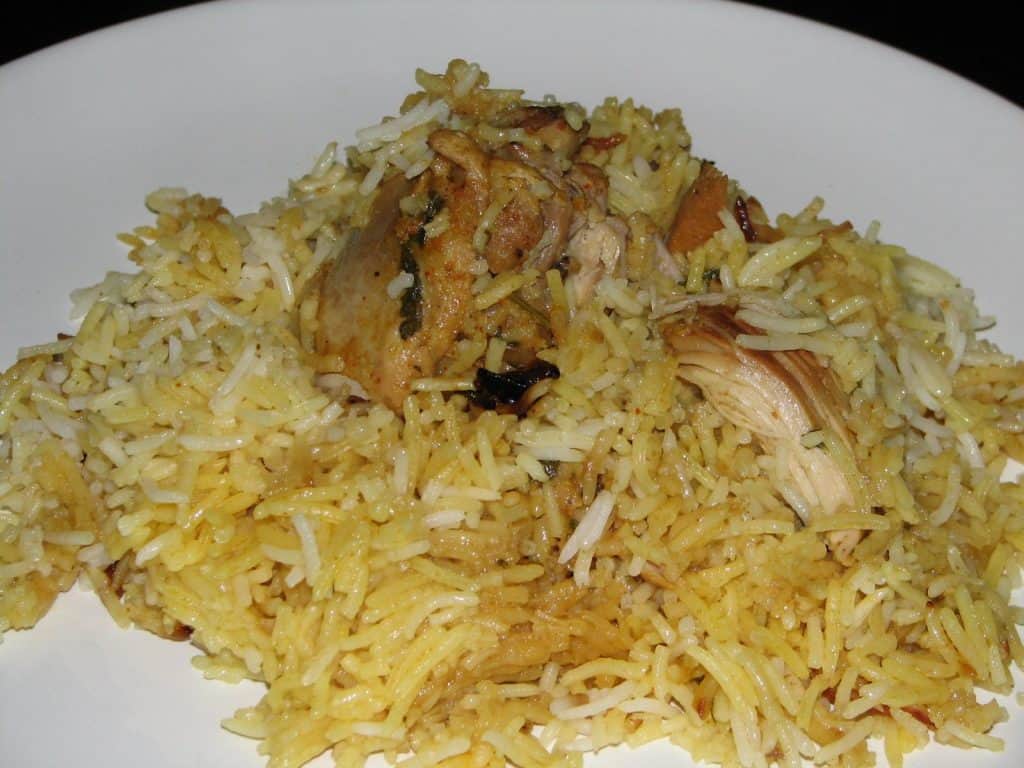
Under the patronage of the Nawabs, Awadhi cuisine developed its unique flavour profile. The first Nawab, Burhan-ul-Mulk Saadat Khan, was of Persian descent, infusing Persian cultural practices into the Nawabi court, including its culinary traditions. Thus, the royal kitchens of the Nawabs became a melting pot of Mughal, Persian, and local influences, perfecting what we now recognize as Awadhi cuisine.
The hallmark of Awadhi cuisine is its meticulous blend of spices. Often confused with Mughlai cuisine, Awadhi cooking, while inspired by Mughal traditions, stands apart. Mughlai dishes are characterized by the liberal use of spices, nuts, milk, and cream. In contrast, Awadhi cuisine is celebrated for its subtle, delicate flavours and the nuanced application of spices, creating a refined and sophisticated dining experience.
Let’s explore some mouth-melting Awadhi traditional dishes:
Kebabs
Galouti Kebab: Galouti Kebab, also known as ‘Gilawat’ or ‘Galawat,’ boasts a rich and fascinating history. Created by the master chefs (Khansamas) during the reign of Nawab Asad-Ud-Daula, the ruler of Awadh, this kebab has a unique origin story. Despite losing his teeth due to old age, the Nawab’s craving for meaty delights remained strong. To satisfy his desire, the royal cooks crafted a kebab so tender it melted in the mouth, giving birth to the legendary Galouti Kebab.
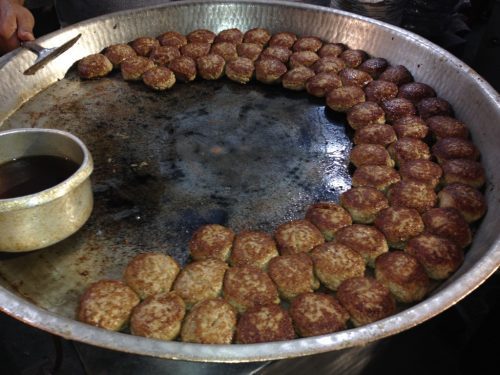
To recreate this delicacy, start with high-quality mutton or beef, ground into a smooth paste with a bit of fat. Marinate the meat with raw papaya to tenderize it. Then, blend in a mixture of spices, including cloves, black cardamom, cinnamon, mace, nutmeg, and chilli. Shape the spiced meat into patties, refrigerate briefly to help them hold their shape, and cook over a medium flame with oil. The result is a batch of tender, flavourful kebabs that truly melt in your mouth.
Seekh Kebab: Legend has it that Seekh Kebab, originally known as Shish Kebab, was introduced to India by the Turks. In Turkish, “Shish” means “sword” or skewer, and “Kebab” means “to roast,” giving the dish its literal meaning of roasting meat on a sword.
Another captivating tale suggests that kebabs arrived in South Asia with the Mughal emperors who invaded India in the 1500s. They brought their love for tender meat grilled on skewers, which blended seamlessly with Indian spices, giving rise to the beloved seekh kebabs, now a popular and affordable street food across India.
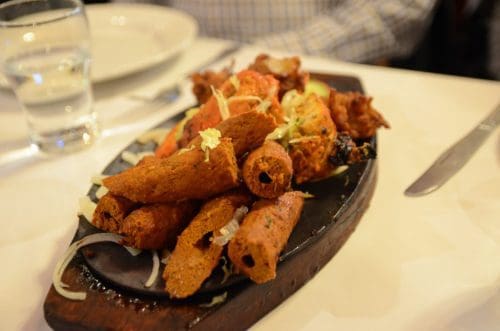
Seekh Kebab is a highly sought-after Indian appetizer, often enjoyed with a side of green chutney (mint and chilli sauce). It’s essentially a flavourful South Asian sausage without a casing. Finely minced meat is mixed with grated onion, fresh cilantro, and a handful of spices like turmeric and Kashmiri chilli powder. This mixture is then pressed around a wide, flat sword-like skewer, known as a “seekh,” and grilled over flames until the meat renders its fat, forming a tube that is crispy on the outside and tender on the inside.
Kakori Kebab: Kakori kebabs, a signature delicacy of Awadhi cuisine, originated in Lucknow. These tender, succulent kebabs, made with minced meat and spices, were created to impress a British official with their softness.
The story behind the birth of Kakori kebabs is as captivating as the Awadhi cuisine itself. It is said that Nawab Syed Mohammad Haider Kazmi from the Kakori district in Lucknow once hosted a dinner party, inviting several friends, including a British official. The Nawab chose an Awadhi menu to impress his guests, with seekh kebab as one of the starters. However, the British official complained about the tough, chewy texture of the seekh kebabs, leaving the Nawab feeling insulted. He then commanded his chefs to create a kebab that was soft and tender.
After several days of relentless effort in the kitchen, the chefs finally presented the Nawab with a batch of soft, succulent Kakori kebabs. These kebabs are made with minced meat, spices, and a secret tenderizer—raw mango.
Curries and Gravies
Nihari: Nihari was originally a breakfast dish served to the Muslim Nawabs of Lucknow and Delhi. Over time, it transitioned from royal kitchens to the tables of labourers, who were given this protein-rich meal instead of wages, as it kept them energized throughout the day. The name “nihari” comes from the Arabic word “nahaar” (morning), highlighting its role as a morning meal, traditionally enjoyed after the fajr namaz (Islamic morning prayer).
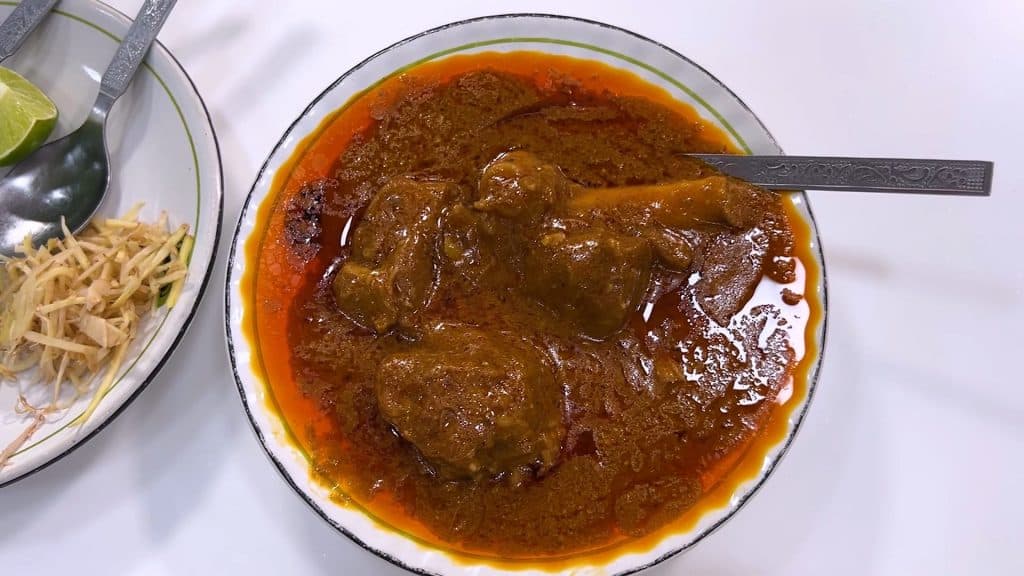
While the basic ingredients for Nihari are straightforward, the magic lies in the precise balance of spices. Up to 50 different spices can be used, tailored to each chef’s preference. From the familiar warmth of cloves to the exotic allure of Peepli (long pepper), these spices add layers of depth and complexity, turning Nihari into a culinary masterpiece.
Korma: Korma, with its roots in Mughlai cuisine, is a hallmark of the Indian subcontinent’s rich culinary heritage. Dating back to the 16th century during the Mughal expansion into South Asia, this dish has become synonymous with royal feasts. Traditionally, korma involves braising meat or vegetables with yoghurt or stock, creating a rich, flavourful sauce. The magic of korma lies in its blend of spices, such as ground coriander and cumin, which are carefully mixed with yoghurt at a low temperature to prevent curdling and allow the flavours to meld with the meat juices.
Historically, this meticulous process was carried out in a pot over a low fire, with charcoal on the lid to ensure even heating. Korma can range from mildly spiced to fiery hot and can feature lamb, goat, chicken, beef, or game. Some versions even combine meat with vegetables like spinach and turnips. The term “shahi” (meaning “royal”) often precedes korma, highlighting its status as a prestigious dish associated with the grandeur of the court, rather than an everyday meal.
Pasanday: The royal Nawabs had a deep reverence for their curries and kormas, and their chefs were dedicated to crafting the most fragrant and tender meat dishes. Pasanday, or pasandas, are boneless mutton fillets flattened with a mallet, and then marinated in a blend of spices, yoghurt, and raw papaya.
Ideally, they are left to marinate overnight, ensuring maximum flavour. These fillets are then cooked in a generous amount of clarified butter, with the marinade added to the pan to create a rich gravy. Pasandas make a hearty curry, perfect when paired with naan or homemade rotis.
Rice Dishes
Awadhi Biryani: Biryani, the timeless classic adored by all, reigns supreme as India’s most beloved delicacy. Originally hailing from Persia, this dish journeyed to Hindustan, evolving with regional flavours and preferences to become a finger-licking favourite across the nation. Among its many variants, Awadhi Biryani stands out, originating from the Awadh region of India.
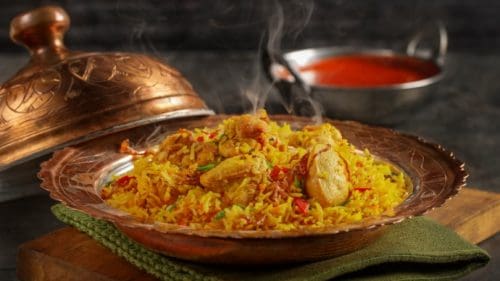
Awadhi Biryani is a delectable rice preparation made using the distinctive dum style, or dumpukht, a signature technique of Awadhi cuisine. Traditionally crafted with mutton, it can also be made with chicken, offering a subtle, flavourful, and aromatic experience.
During the Mughal era, Awadh (now Lucknow) served as the capital, lending its name to this delicate biryani. Awadh cuisine, deeply influenced by the Nawabs of Awadh from Persia, gave rise to variations like vegetarian Awadhi dishes like Awadhi Veg Biryani. These adaptations cater to India’s diverse palate, ensuring that everyone, whether vegetarian or non-vegetarian, can savour the exquisite taste of Awadhi Biryani without disappointment.
Tehri: Tehri is a simple yet delicious one-pot meal cherished by families in North India. Mothers and grandmothers from Uttar Pradesh, Bihar, and Haryana often serve it for lunch alongside coriander chutney, raita, papad, and pickle.
While it might be mistaken for vegetable biryani or yellow pulao, Tehri has its own distinct charm. Unlike biryani, it doesn’t involve marinated ingredients, and unlike pulao, it doesn’t use stewed meat. Tehri finds a unique middle ground: it features the “bhun-na” (sautéing) of vegetables with fragrant spices reminiscent of biryani and combines rice and veggies without layering, similar to pulao.
Tehri’s origins trace back to the Kayastha community of Hindu bookkeepers in the courts of Awadh. This dish has many variations beyond Uttar Pradesh. In Jammu and Kashmir, a version called tehar is a staple comfort meal for Kashmiri Pandit households. This simpler version involves cooking rice with turmeric and adding a tadka (tempering) of mustard oil.
A Gourmet Tour of Awadhi Gastronomy
A Gourmet Tour of Awadhi Gastronomy showcases the elegance, sophistication, and rich flavours of Awadhi cuisine. Developed in the royal kitchens of the Nawabs, these dishes blend Mughal, Persian, and local influences to create a unique culinary experience.
Signature dishes range from a grand variety of kebabs, such as Galouti and Seekh to hearty biryanis and kormas. The cuisine also features breads like roomali roti and sheermal, and sweet delicacies such as shahi tukda and kheer. Awadhi cuisine is celebrated for its complex flavour profiles and royal heritage, making it a true feast for the senses.
Whether it’s the tender Kakori kebabs or the aromatic Awadhi biryani, this cuisine offers a timeless and exquisite dining experience that reflects the grandeur of its heritage.
Read more: Food Voyager



